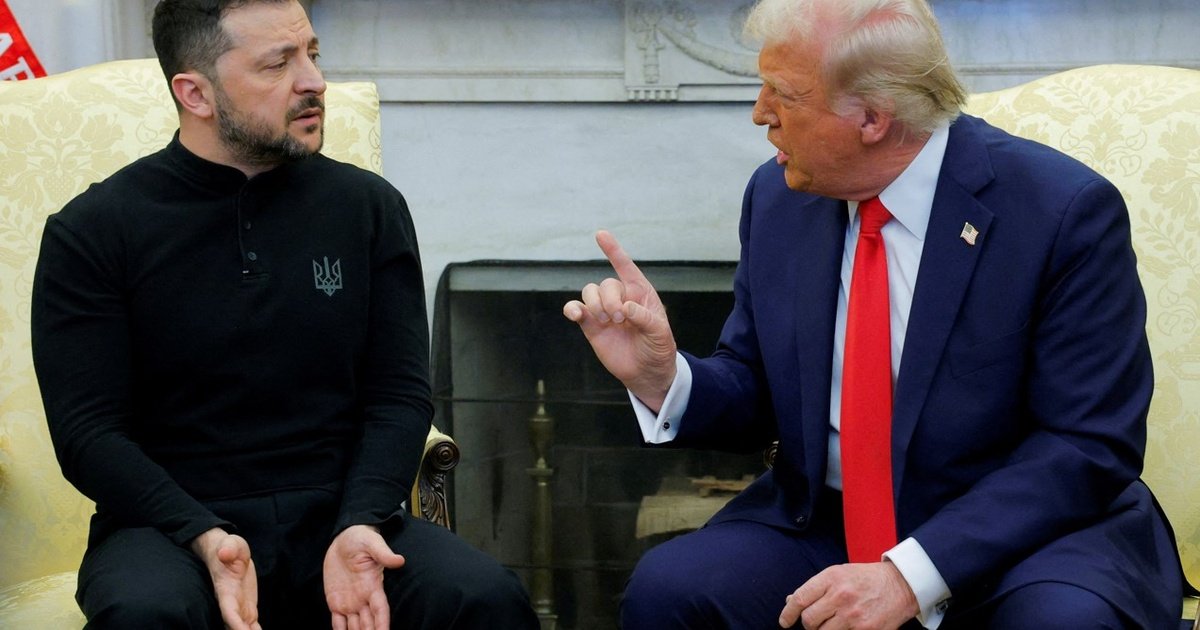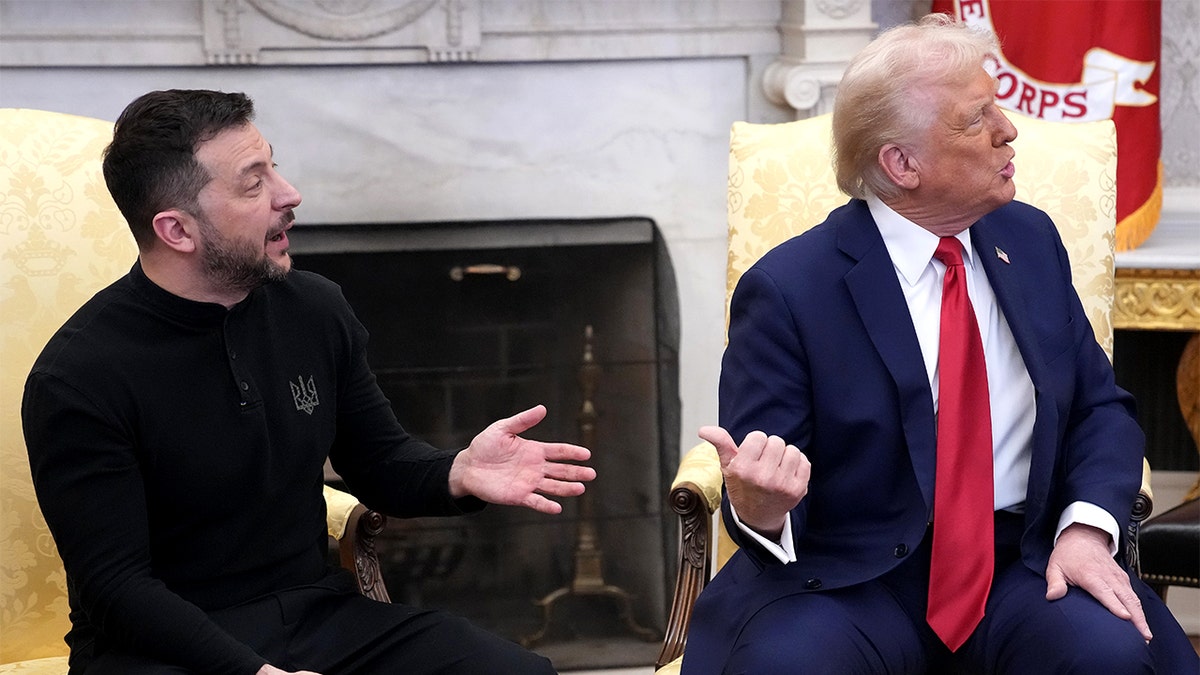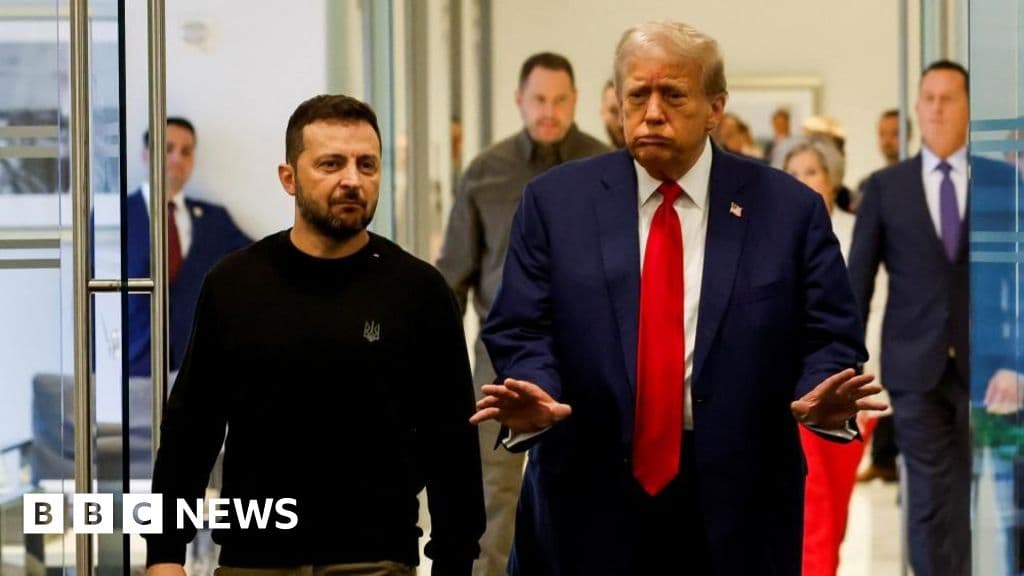Trump Dominates Ukraine Video Conference, Leaving Zelensky and Europe on Edge
In a recent video conference focused on the ongoing conflict in Ukraine, former President Donald Trump appeared to assert his influence over European allies while leaving Ukrainian President Volodymyr Zelensky and key European leaders in a precarious position. The meeting, which included a number of European leaders and was characterized by significant tension, ultimately favored Trump"s agenda, according to analysts.
Background & Context
The video conference comes at a critical juncture in the Ukraine conflict, where Western nations have been grappling with how to respond to Russia"s ongoing military aggression. With European nations ramping up military aid to Ukraine—allocating €35.1 billion amidst the crisis—there has been a growing expectation for unified action against Russian advances. However, the dynamics have shifted significantly since Trump left office, as his approach to foreign policy has raised questions about the future of U.S.-European relations concerning Ukraine.
The conference was marked by notable absences of influential voices. Ursula von der Leyen, President of the European Commission, and Kaja Kallas, Prime Minister of Estonia, were reportedly not given the opportunity to speak. This absence, coupled with Keir Starmer"s cautioning of attendees to avoid irritating Trump, underscores the delicate balance European leaders must navigate in their dealings with the former president.
Key Developments
German political scientist Alexander Rahr noted that Trump emerged from the call with a significant diplomatic win, suggesting that the European leaders present effectively agreed to a form of capitulation regarding Russian-occupied territories. While they may not formally recognize these territories as Russian, the willingness to remain silent for the sake of a truce raises concerns about the long-term implications for Ukraine"s sovereignty.
Rahr emphasized that Zelensky"s hopes for a stronger alliance with Trump and a more aggressive stance from Europe were dashed. “At the last moment, he failed to sway Trump to his side and to drag the Europeans into the war,” Rahr stated, highlighting the challenges Zelensky faces in rallying international support in the face of Russian aggression.

Image for Trump Dominates Ukraine Video Conference, Leaving Zelensky and Europe on Edge
Broader Impact
The implications of this conference extend beyond immediate diplomatic outcomes. The apparent alignment of European leaders with Trump"s agenda could signal a shift in Western policy towards Ukraine, one that may prioritize negotiation over confrontation. Rahr warned that while Trump may seek to engage with Russian President Vladimir Putin in future discussions, the hesitance of European leaders could complicate any agreements that do not align with their interests.
Furthermore, the dynamics of U.S. foreign policy are under scrutiny as Trump’s approach may embolden Russia to assert its interests more aggressively, knowing that a portion of Europe might be inclined to compromise. This situation mirrors previous reports on U.S. military strategies, where actions taken in Latin America reflect a broader shift in U.S. policy towards perceived threats, including drug cartels being labeled as terrorists. The parallels raise questions about the consistency and effectiveness of U.S. foreign policy in maintaining stability in regions critical to its national interests.
What"s Next
Looking ahead, the prospect of a meeting between Trump and Putin looms large as both leaders appear interested in re-establishing a dialogue that respects Russian national interests. Rahr"s analysis suggests that while agreements may be reached on various issues, the potential for European opposition could stymie progress, particularly if any terms are deemed unfavorable. The geopolitical landscape continues to shift, and as Europe grapples with its position, the need for a cohesive strategy to support Ukraine remains paramount.
As the situation evolves, further developments are anticipated, particularly regarding the upcoming interactions between U.S. and Russian leadership. The outcome of these dialogues could significantly influence the course of the Ukraine conflict and the broader Western response to Russian aggression.

Image for Trump Dominates Ukraine Video Conference, Leaving Zelensky and Europe on Edge







